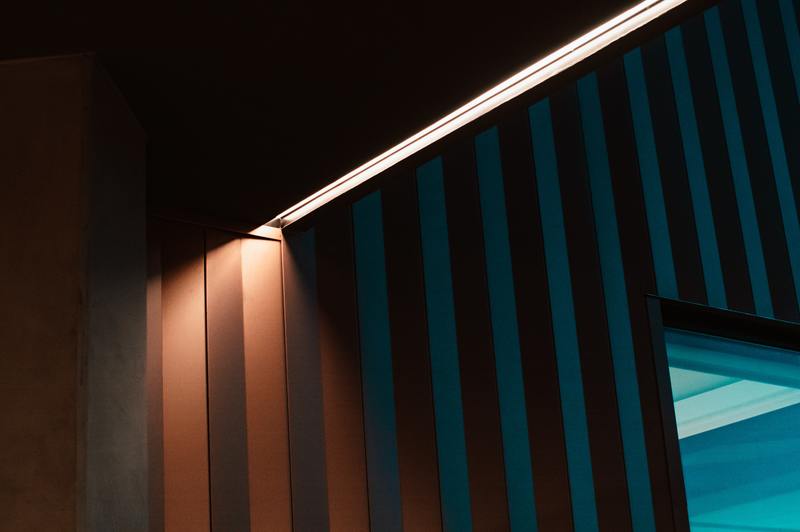Examining the damage is an essential step in how to fix water damaged paneling. However, before that, you have to be aware of the different kinds of paneling.
This is to determine which part of your home needs your attention in the event of water damage. That is why we included the different kinds of wood paneling and how and why they acquire water damage.

We also included the signs you need to watch out for and the steps you need to do to restore your wood paneling. Take your time in reading through this, as it is packed with information.
Different Kinds Of Wood Paneling
Wood paneling can either use traditional solid wood or engineered wood boards. Although both are technically wooden, their feel and elegance are different.
Solid wood is considered more elegant, but cost-wise, homeowners prefer engineered timber. The four kinds of wood paneling are wall paneling, wainscoting, ceiling paneling, and exterior paneling.
Wall paneling adds a feel of sophistication to your home and is usually made of timber products. They can either be painted over or stained. Also, they increase your home value.
Wainscoting can be done in different design choices. However, it has the disadvantage of vulnerability to water damage. We recommend using teak for wainscoting as they hold up well when used for structural framework.
Ceiling paneling is the most durable type of paneling. They act as insulation and resist changes in moisture conditions, making the inside of your home more comfortable.
Lastly, exterior paneling can either be stained or painted too. Also, out of the four types, it is sustainable and eco-friendly.
After knowing the different types of paneling, you are now more prepared to read through how they can acquire water damage.
How does paneling acquire water damage?
Damage to your walls and your ceiling can inevitably lead to damage to your wood paneling. Even if the wood used for your paneling is treated, it is not entirely protected from water.
Also, water is a threat to its aesthetic. It can cause discoloration.
Ultimately, untreated water damage on wood can affect your home’s structural integrity. This could lead to higher repair costs and lesser market value of your home.
Those are the consequences of water damage, but below are the signs so you can watch out for them.
Typical signs of water damage on paneling
1. Warped wood
As mentioned above, wainscoting can be vulnerable to changes in moisture. They may shrink or expand depending on the moisture level of your home. Although the extent of the changes in shape depends on the quality and type of wood, they are still bound to react to the different humidity levels.
2. Water stains or discoloration
A water stain is a type of discoloration that happens due to water damage. Undoubtedly, this is not difficult to detect since your wood paneling also serves an aesthetic value to your home. If its physical appearance is affected, you will likely notice.
3. Presence of mold
Since paneling is connected to the walls, ceiling, and siding, they are also vulnerable when these structures acquire water damage.
That includes the presence of mold, especially with hidden leaks behind the structures, as mentioned earlier. After going through the signs of water damage on paneling, proceed to the article’s next part to learn how to fix water damage.
Steps In Fixing Water Damaged Paneling
Step #1. Examine
Investigate the extent of water damage on your wood paneling. Has it been delaminated? Did the wood warp or is it peeling?
Consider these questions as you examine the state of your paneling. After that, document the water damage before contacting your insurance provider.
This is to ensure that you have evidence of the degree of damage, and it could help you with your insurance claim. This would also make it easier for your lawyer to help you with your claim.
After documenting, you might want to clarify your insurance coverage with your lawyer and your insurance company. This is to be sure if the water damage that happened in your home is included in your home’s insurance coverage.
Step #2. Remove and sand
After examining the damage, proceed in removing the damaged sections of your wood paneling from the wall. Remove the glue from the paneling’s laminate. Then, sand the area to make it easier for the wood filler to adhere to the surface.
Step #3. Apply epoxy resin
Make sure the laminate is dry before applying epoxy wood filler. Stir the wood filler mixture before application, too. Then, spread it on the surface and allow it to dry.
Step #4. Re-attach
After filling the spaces of your laminate, you can now re-attach the laminate on the wood paneling. Ensure that the adhesive is smooth and evenly applied.
Then, use a painter’s tape to hold the structure in place. Lastly, let the glue dry.
Step #5. Sand and seal
Sand the whole thing down to make it easier for the sealant to adhere to the repaired area. Finally, apply a clear wood sealer on the surface.
Conclusion
Wood paneling has more than one use in your home, so it is only natural that you’d want to restore them after acquiring water damage. In that kind of situation, we wish you could learn from this article about how to fix water damaged paneling.
